
Our full featured SMS marketing platform has all the tools and integrations your restaurant needs to engage with customers and keep them coming back.

No need to be an expert in technology or text marketing to use our service. We’ve made it easy to use. Still need help? Our awesome humans would love to talk to you.

After 10+ years and thousands of customers, we know how to help restaurants use text messaging to increase sales and repeat business.
In order to establish a successful text marketing program for your restaurant, you’ll need fast and consistent list growth; this is where SlickText excels. You won’t find a richer set of effective marketing tools designed to build your customer database.
Encourage people to join your restaurant’s VIP list with beautiful website pop-ups, online landing pages, or table tents with custom QR codes. Use social media links, let your customers text a short code or ten-digit number to join, or upload an existing list of contacts.
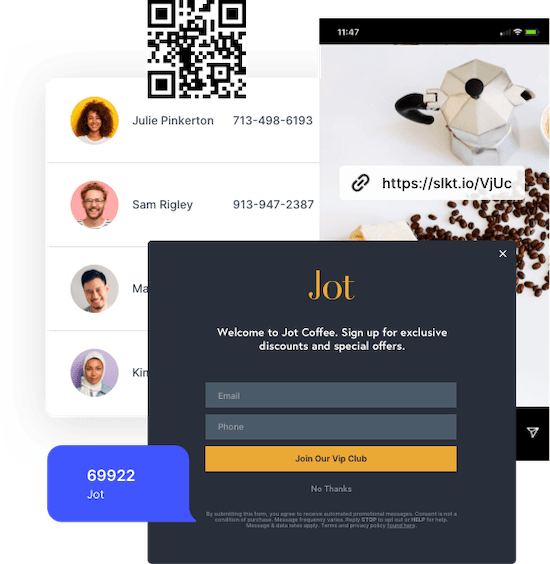
Influence customer behavior and increase repeat business by sending timely, relevant mass text messages. SlickText allows you to capture and use data to segment your customers and tailor the messages you send them. Send targeted mass texts or converse with your restaurant goers individually using our one-on-one texting capability.
We’ll help you increase customer engagement with fun and easy-to-use tools like loyalty rewards, automated birthday offers, text to win contests, and unique promo codes.
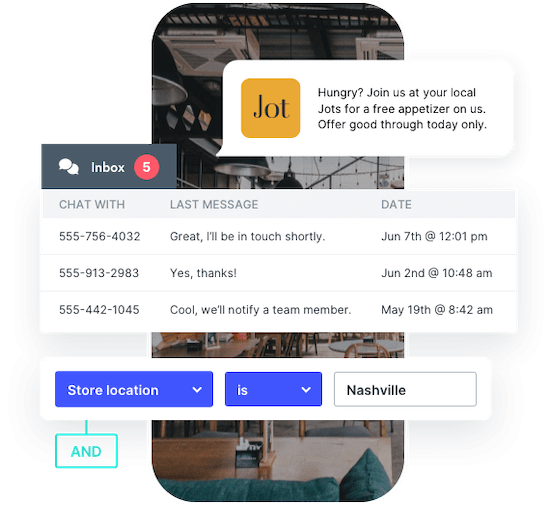
SlickText’s proprietary software can automate many of the text messages you need to send to customers and staff. With our easy-to-use, drag and drop workflow builder, you can create sequences that send smart, personal, and tailored messages on autopilot.
Restaurants are using SlickText to send targeted coupons, reservation reminders, messages encouraging online reviews from happy customers, automate birthday greetings with a celebratory coupon, and much more.
View All Our Automation Options
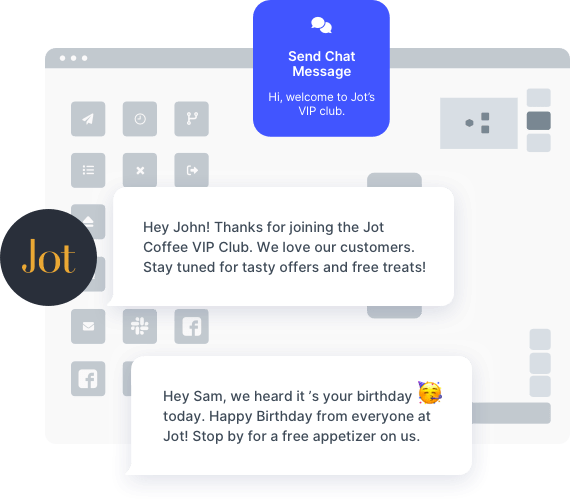
Through SlickText’s suite of integrations, our text marketing software plays well with popular POS systems that restaurants use today. Connect with your existing systems to exchange data and create hyper-targeted list segments, trigger automated text messages, manage loyalty rewards programs, and grow your customer list.
Want something more customized? Our REST API will allow your developers to build and manage a solution that’s tailored to your specific needs.

SMS is the best way to communicate with employees. Create and segment lists based on data like job function, location, or availability. Send relevant messages to staff on their preferred device--their phone--where you know they’ll read it.
Use text messaging to help manage your work roster, send reminders or time sensitive information, and gauge employee satisfaction. Increase employee happiness by wishing them a happy birthday or perhaps acknowledging their work anniversary. Best of all, it’s easy to use and can be fully automated.
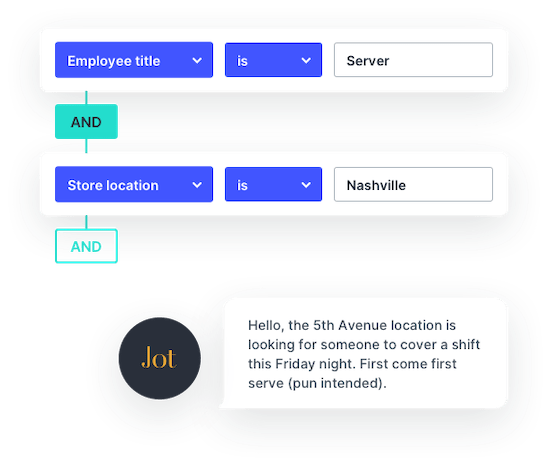
There’s a lot for managers to worry about in the restaurant business. You need to make sure that the money you’re spending and the resources you’re deploying are effective. Every dollar counts, and we know that monitoring the performance of your SMS marketing efforts is essential.
We’ve built dashboards and reporting tools that give you a clear view into the effectiveness of your subscriber growth, customer engagement, and messaging campaigns. You’ll see click-through and response rates, website visits, coupon redemptions, and customer loyalty interactions.
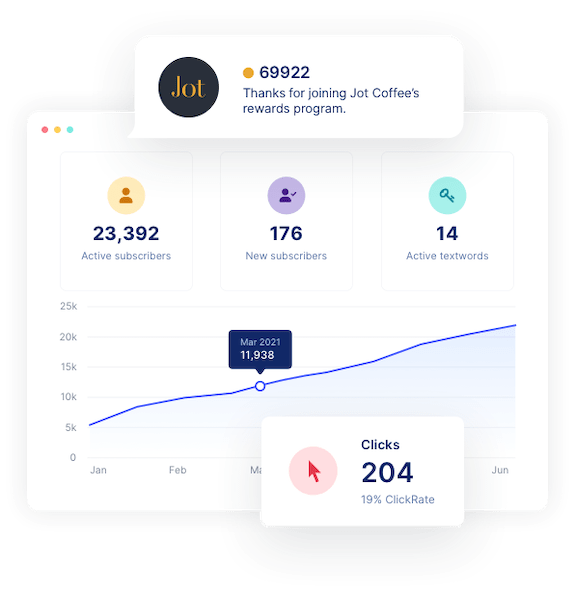
Unlike other software companies that take your money and disappear, we take a much different approach. We understand that your restaurant’s success with text marketing directly impacts ours. That’s why we maintain a team of experts who are fanatical about supporting you. From one-on-one setup and training to ongoing account management and live support, we’ll have your back.

Explore our platform with a free trial!
Start Free Trial